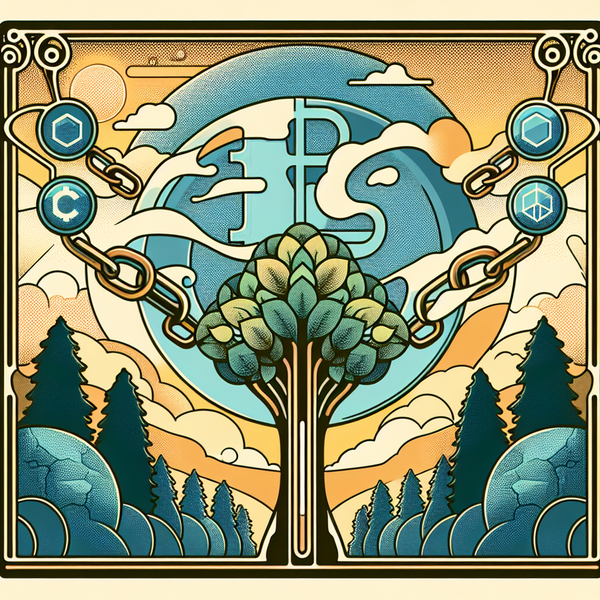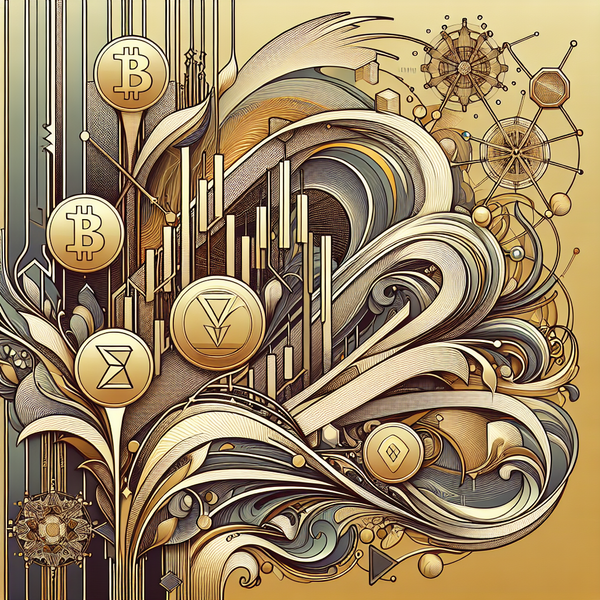RWA Liquidity Management: How Tokenization Is Unlocking Alternative Investment Potential

The alternative investment landscape has long faced a fundamental challenge: illiquidity. From private equity to real estate, fine art to carbon credits, most alternative assets have traditionally been locked in years-long holding periods with limited exit options. This illiquidity creates a significant barrier, restricting investment to those who can afford to have capital tied up indefinitely and preventing efficient price discovery.
But blockchain technology is changing this paradigm. Through tokenization, previously illiquid assets are being transformed into tradable digital tokens that maintain their underlying value while offering unprecedented liquidity options.
The Liquidity Conundrum of Alternative Investments
Alternative investments have historically suffered from what economists call the "illiquidity premium" – the additional return investors demand for accepting limited ability to quickly convert assets to cash without significant value loss. This premium can range from 3-7% annually, reflecting the substantial friction in these markets.
Traditional alternatives require investors to:
- Commit capital for 5-10+ years
- Navigate complex, expensive, and time-consuming transaction processes
- Accept significant discounts for early exits
- Deal with limited price discovery mechanisms
These limitations restrict market efficiency and accessibility, preventing alternative assets from reaching their full potential as an investment class.
How Tokenization Fundamentally Transforms Liquidity
Asset tokenization – the process of creating blockchain-based digital tokens that represent ownership in real-world assets – is addressing these challenges through several key mechanisms:
1. Secondary Market Development
Tokenized RWAs can be traded on both centralized exchanges (CEXs) and decentralized exchanges (DEXs), creating vibrant secondary markets. Platforms like SwarmX allow tokenized securities and commodities to trade over-the-counter or on regulated venues, while projects like Lumia are creating innovative dual-source liquidity models.
As exemplified by the Lumia Stream system, modern tokenization platforms are aggregating liquidity from both centralized and decentralized sources to create diverse liquidity pools. This hybrid approach combines the compliance benefits of centralized venues with the 24/7 accessibility of decentralized protocols.
2. Fractionalization and Partial Liquidation
Perhaps the most revolutionary aspect of tokenization is the ability to fractionalize previously indivisible assets. A $10 million commercial property or a private equity stake can be divided into thousands or millions of tokens, each representing proportional ownership.
This fractionalization enables:
- Partial liquidation – investors can sell precisely the percentage of their holdings they wish to exit
- Lower entry barriers – smaller investors can participate with minimal capital
- Improved price discovery – more market participants lead to more efficient pricing
- Portfolio rebalancing – adjust exposure without complete exit
For example, Redbelly Network's partnership with Liquidise aims to tokenize over $800 million in unlisted private equity, providing liquidity options similar to public markets without the drawbacks of a full public listing.
3. Collateralization Opportunities
Tokenized assets unlock a powerful new liquidity mechanism: using alternative investments as collateral for loans or other financial activities. This creates liquidity without selling the underlying asset.
Self-custody of tokenized assets makes it easier to pledge them as collateral in DeFi protocols, potentially reducing counterparty risk and interest rates. We're seeing this with:
- Swarm and MetaStreet's gold NFT lending pool, which allows holders of tokenized gold to borrow against their assets
- Redbelly Network's RIHomes DApp, where property tokens can be collateralized to borrow against real estate holdings
- 3A DAO's integration with Redbelly Network for cost-effective liquidity using tokenized assets as collateral
This collateralization creates a new form of "use-case liquidity" – the ability to utilize the economic value of assets without selling them.
Real-World Impact and Current Implementations
These liquidity innovations are already transforming markets:
Real Estate Tokenization: Projects like Lumia Towers in Istanbul are tokenizing $220 million in real estate with fractional investments starting at just $1, democratizing access to property investment with robust secondary market options.
Private Equity Accessibility: Redbelly and Liquidise are tokenizing $800 million in unlisted private equity, creating liquidity for an asset class traditionally locked up for 7-10 years.
Commodities Trading: Tokenized gold from platforms like Swarm now has lending markets, allowing holders to access liquidity without selling their inflation hedge.
Treasury Tokenization: Ondo Finance has surpassed $1 billion in total value locked (TVL) for tokenized US Treasuries, adding liquidity to what was already a relatively liquid asset class but with significant trading frictions.
The Future of RWA Liquidity: Challenges and Opportunities
While tokenization is solving many liquidity challenges, several hurdles remain:
Regulatory Uncertainty: The regulatory landscape for tokenized securities and commodities continues to evolve, with jurisdictional differences creating compliance challenges.
Market Maker Requirements: Smaller tokenization projects still struggle to afford professional market makers to provide consistent liquidity.
Settlement vs. Liquidity Tradeoffs: Real-time settlement decreases credit risk but may increase liquidity risk in certain market conditions.
Cross-Chain Interoperability: Liquidity fragmentation across different blockchains remains a challenge, though projects like Mantra Chain are working on solutions.
Despite these challenges, the trajectory is clear – we're moving toward a financial landscape where alternative investments have liquidity profiles closer to traditional securities, but with the unique benefits that alternatives provide.
Conclusion: The New Liquidity Paradigm
Tokenization isn't merely digitizing assets – it's fundamentally restructuring how we conceptualize investment liquidity. By addressing the primary challenge of alternative investments, blockchain technology is unleashing the full potential of this asset class.
The implications extend beyond convenience for current investors. By solving the liquidity problem, tokenization is democratizing access to alternatives, improving market efficiency, and enabling new financial products that blend the stability of real-world assets with the flexibility of digital tokens.
As platforms continue to innovate and regulatory frameworks mature, we can expect tokenized alternatives to become an increasingly important component of the global financial system – one where illiquidity premiums shrink and capital allocation becomes more efficient across the entire economy.
The future of alternative investments isn't just tokenized – it's liquid, accessible, and primed for unprecedented growth.




